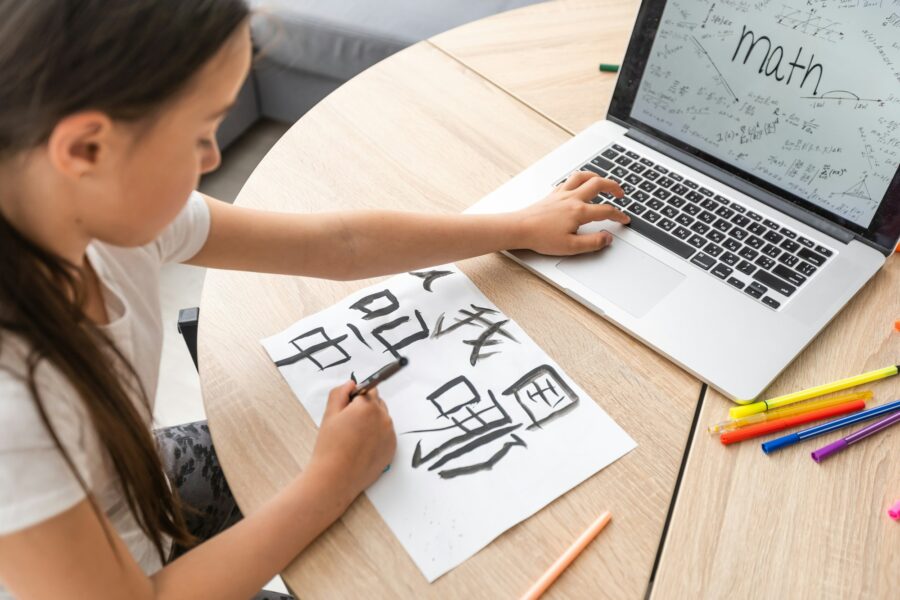Mandarin and Cantonese are two of the most widely spoken Chinese languages, each with its own unique characteristics and cultural significance. While Mandarin is the official language of China and is widely used in education and media, Cantonese holds a special place in regions like Hong Kong and Guangdong. This article explores the key differences between Mandarin and Cantonese, from pronunciation and vocabulary to their historical and cultural contexts. Whether you’re a language enthusiast or simply curious, join us as we delve into the fascinating world of these two languages.

“Mandarin”, from its Chinese name Guānhuà
Mandarin according to Wikipedia
Chinese Mandarin is a group of Chinese language dialects that are natively spoken across most of northern and southwestern China and Taiwan. The group includes the Beijing dialect, the basis of the phonology of Standard Chinese, the official language of China and Taiwan.
In everyday English, “Mandarin” refers to Standard Chinese, which is often called simply “Chinese”. Standard Mandarin Chinese is based on Beijing dialect, with some lexical and syntactic influence from other Mandarin dialects. It is the official spoken language of the People’s Republic of China (PRC) and Taiwan (Republic of China, ROC), as well as one of the four official languages of Singapore, and a high-prestige minority language in Malaysia. In English speaking countries, Mandarin is also widely spoken, for example, within Chinatowns across North America, for example, Canal Street Chinatown in Manhattan. Most older residents in these Chinatowns only speak Mandarin. It is one of the six official languages of the United Nations, under the name “Chinese”. Chinese speakers refer to the modern standard language as
- Pǔtōnghuà (普通话; 普通話; ‘common speech’) in mainland China,
- Guóyǔ (国语; 國語; ‘national language’) in Taiwan or
- Huáyǔ (华语; 華語; ‘Huaxia language’) in Malaysia and Singapore,
Cantonese accounting to Wikipedia
Chinese Cantonese is the traditional prestige variety of Yue Chinese, a Sinitic language belonging to the Sino-Tibetan language family. It originated in the city of Guangzhou and its surrounding Pearl River Delta, and is currently spoken by over 82.4 million native speakers.
Read this article to learn to say Hello in Cantonese
Read about why you should learn Cantonese

Mandarin vs. Cantonese: Common Misconceptions
Misconception 1: They Are Dialects of the Same Language
Mandarin and Cantonese are distinct languages with different phonetics, grammar, and vocabulary.
Pronunciation and Tones
- Mandarin: Uses four tones to differentiate meaning. For example, the word “ma” can mean “mother,” “hemp,” “horse,” or “scold” depending on the tone used.
- Cantonese: Has six to nine tones, making it more complex in terms of tonal variation12.
Grammar
- Mandarin: Generally follows a Subject-Verb-Object (SVO) order. For example, “I eat rice” is “我吃饭” (wǒ chī fàn).
- Cantonese: Also follows an SVO order but has unique sentence structures and particles that are not found in Mandarin.
Vocabulary
- Mandarin: Uses simplified characters, which were introduced to increase literacy rates by making characters easier to learn.
- Cantonese: Uses traditional characters, which are more complex and retain more strokes
Misconception 2: They Are Mutually Intelligible
Speakers of one language often cannot understand the other without prior learning. A Mandarin speaker typically cannot understand fully Cantonese and vice versa, due to the significant differences in pronunciation, vocabulary, and grammar.
Misconception 3: Written Chinese Is the Same for Both
While the written script can be similar, the spoken languages differ significantly. However, if a Mandarin speaker and a Cantonese speaker have to communicate with each other, written Chinese will be the best way to communicate between the two. Despite they don’t understand each other verbally, they can communicate via written Chinese because the written characters are understandable to both.
Misconception 4: Mandarin Is Superior to Cantonese
Both languages have their own cultural and historical significance. Neither is superior!
Misconception 5: Simplified Chinese is Mandarin
It’s not true. Simplified and traditional Chinese are just two different writing systems. The same character in Simplified Chinese means the same in Traditional Chinese, however, with a more simplified structure. Simplified Chinese can be understood and pronounced by both Mandarin speakers and Cantonese speakers.
Usage and Geographic Distribution
- Mandarin: The official language of China, Taiwan, and one of the official languages of Singapore. It is spoken by the majority of the Chinese population.
- Cantonese: Predominantly spoken in Hong Kong, Macau, and Guangdong province. It is also widely spoken in Chinese communities abroad.
Mutual Intelligibility
- Mandarin and Cantonese: Are not mutually intelligible. Most Mandarin speakers have a basic understanding of Cantonese thanks to Hong Kong TV dramas. Vice versa, Cantonese speakers have a basic understanding of Mandarin due to their exposure to both languages. It’s not uncommon to hear both Mandarin and Cantonese in the same setting in Hong Kong or even in Markham in Ontario.
Understanding the Differences
Here are the key differences between Cantonese and Mandarin:
Language Family: Both are Chinese languages but come from different branches. Mandarin is based on the Beijing and northern Chinese dialects, while Cantonese is a variety of Yue languages spoken in the southeast corner of China.
Pronunciation and Tones: Mandarin has four tones, whereas Cantonese has as many as nine, making its pronunciation more complex.
Writing System: Mandarin primarily uses simplified characters, which are easier to learn. Cantonese uses traditional characters, which are more complex but hold historical significance.
Mutual Intelligibility: Mandarin and Cantonese are mutually unintelligible, meaning speakers of one language cannot understand the other without learning it separately.
Examples between the two Chinese languages
Here are some examples of words in both Cantonese and Mandarin to highlight their differences:
Example 1: Completely Different
Potato in Spoken Chinese
- Cantonese: 薯仔 (syu4 zai2)
- Mandarin: 土豆 (tǔ dòu)
They are completely different in Cantonese and Mandarin. With different sets of Chinese characters.
Example 2: Somewhat Similiar
Thank you in spoken Chinese
- Cantonese: 多謝 (dō ze6)
- Mandarin: 谢谢 (xiè xiè)
They both share the last character. In Cantonese, the first character 多 dō (many) adds to the meaning of “many thanks”. In Mandarin, it just repeats the same character 谢 xiè (gratitude) twice and it translates as “thank thank”. The Cantonese version 謝 is written in traditional Chinese characters and the Mandarin version 谢 is written in simplified Chinese.
Misconception: Traditional Chinese means Cantonese and Simplified Chinese means Mandarin. Although in Hong Kong, Cantonese is the official spoken language alongside with Traditional Chinese characters, however, it DOESN’T mean Traditional Chinese means Cantonese. Traditional Chinese and Simplified Chinese are simply the characters represented in different ways, which means Simplified Chinese are Chinese characters that are written in a more simplified form with less strokes or omitted radicals.
Example 3: Exact Characters
Hello in spoken Chinese
- Cantonese: 你好 (nei5 hou2)
- Mandarin: 你好 (nǐ hǎo)
They both have the same characters, the only difference is the pronunciation
Listen to the pronunciation in Cantonese followed by Mandarin for 你好
Conclusion
This article has highlighted the distinctions between the “common language” Putonghua and the Yue Canton Language, focusing on specific examples like the word “potato,” which has two sets of different Chinese characters in Mandarin and Cantonese. Learners need to understand these nuances for effective communication and cultural appreciation. Whether you are a Mandarin learner or a Cantonese learner, stay tuned to our articles as we discuss many insightful topics between the two languages. Follow our social media for useful online learning resources. LearnCantonese.ca Instagram & LearnCantonese.ca YouTube Channel.
